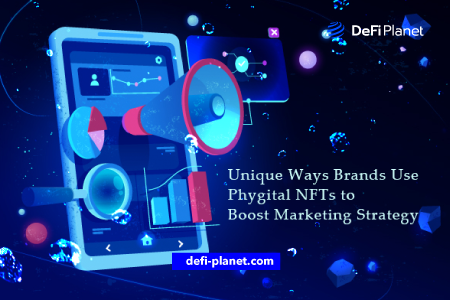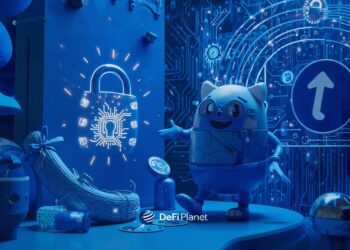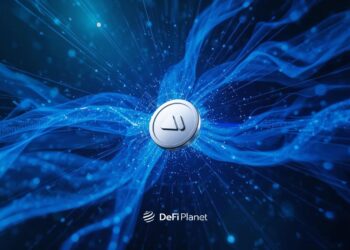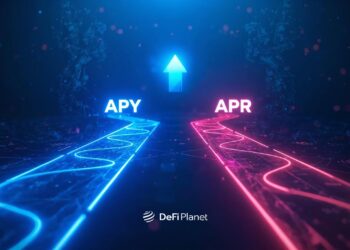Manufacturers have always sought out new and innovative ways to connect with their customers. Non-fungible tokens (NFTs) have proven to be an effective tool for manufacturers in expanding their reach and improving their current advertising methods.
The use of Phygital NFTs in advertising has gradually gained a lot of attention. Businesses use advertising to accomplish various objectives, one of which is to increase brand awareness among the public.
Phygital appears to be a made-up term that combines the words “physical” and “digital.” If Phygital NFTs can ensure the seamless integration of digital and physical experiences, manufacturers will have a plethora of viable advertising options.
This article comprehensively examines why and how brands incorporate phygital in their marketing campaigns.
An Overview of Phygital NFTs
Phygital NFTs do not only redefine the user experience, but they also usher in a brand new economy based on transparency and trust. The lack of trust in the established economic system, as it has been up until recently, has been a persistent problem.
In our lifetimes, almost everyone has come into contact with something that wasn’t quite what it seemed to be. People’s faith is shaken every day by things that happen in the real world and online, like fake works of art that look like they belong in a Hollywood blockbuster and knockoffs of popular fashion brands. But now, phygital NFTs will change all that.
Every physical object in a phygital economy can be traced, trusted, and transparent thanks to the blockchain. The decentralized nature of blockchain eliminates the possibility of a single point of control, making NFTs completely immune to manipulation.
In a nutshell, phygital NFTs are phygital assets that combine digital assets derived from metadata (a smart contract built into the NFT) with physical assets (such as tickets, a 3D model, and lots more).
Why Are Luxury Brands Interested in Phygital NFTs? (Using Fashion Brands As a Case Study)
Web3 offers a goldmine of opportunity for high-end fashion brands. For example, Condé Nast’s fashion publication chose “Web3” as its theme. Similarly, major brands such as Vogue and NQ are transitioning to Web3. There are numerous parallels between these sectors (i.e., Web3 and high-end fashion). Web3 enables luxury fashion brands to convert their customers into an audience.
Luxury brands are leveraging the power of NFTs to boost their brands. Balmain’s NFTs, for example, include:
- Runway show invitations
- A chance to meet Olivier Rousteing, the brand’s creative director.
- One-on-one meetings with Dogpound creator Kirk Myers.
Luxury brands are also using phygital NFTs to create fantasy fashion clothes that do not exist in reality. The first NFT by Balmain, for example, was a couture creation that was difficult to recreate in real life because the entire dress was engulfed in flames. Couture designs are difficult to create and usually require significant time, work, and money.
However, very few people prefer to dress in couture. Digital garments are much easier and less expensive to produce than physical ones. Designers can express themselves more creatively, and the creative director can add a personalized touch to each garment. More people will be able to purchase digital clothing. However, exclusivity will be retained because premium brands cannot afford to be ubiquitous.
As a result, the digital version of clothing is purposefully kept limited and unique to provide buyers with a similar luxury experience. Everyone wants something distinctive and luxurious when it comes to high-end clothes. Customers should have a similar experience when purchasing the NFT. Some brands combine their NFT drops with the launching of their new range of products.
How Can Phygital NFTs Be Used in Brand Marketing?
Because of how NFTs work, they have a wide range of business applications, such as consumer loyalty and rewards. Each physical product is assigned a unique NFT to ensure it is genuine and can be verified. These are important markers in a world where counterfeit goods are common.
The best way to use phygital NFTs for brand marketing is to focus on creating unique customer experiences. 75% of clients want businesses to combine existing and new technology to provide better experiences. Phygital NFTs are particularly effective in this context since they can be readily integrated as part of one’s brand story, allowing customers to increase their experiences and connection with the brand.
Integrating phygital NFTs into the customer experience provides numerous opportunities to build brand loyalty. Brands can, among other things, hold special virtual events or supplement their in-person events, offer an exclusive rewards system, and promote new items.
Burger King’s Keep It Real Meals NFT collection is an excellent example of a success story in terms of enhancing customer experience and developing brand loyalty through phygital NFTs. Burger King, in collaboration with Trading NFT Sweet Platform, integrated 6 million QR codes on their most popular burger and sandwich packaging boxes. Customers could unlock, collect, and trade Burger King NFTs after scanning those codes.
Customers who unlocked four NFTs got a reward-based NFT, which could be anything from digital collectibles to a year’s worth of Whopper sandwiches, signed swag, or a phone call from one of the celebrities representing the brand.
It is critical to have a thorough understanding of the best practices for utilizing physical NFTs in marketing. As a result, this section sheds light on the various use cases that brands can employ to maximize the potential of using phygital NFTs for brand image enhancement.
Online Community Development
NFTs, like other communities, develop spontaneously around shared interests. Many NFTs now provide access to exclusive social groups that were previously restricted to owners of a specific collection of NFTs.
If a brand operates a physical NFT marketplace, it can establish a Discord community dedicated to its platform.
Event Tickets
NFTs can be used as digital tickets for physical or virtual events hosted by a business. Using NFTs as event tickets has other advantages besides charging a higher price for each ticket and drawing a larger crowd due to the NFT integration.
Mintbase is a platform that allows users to create NFTs using digital assets and tickets. The platform is helpful for event planners who want to host an eco-friendly event with no paper waste.
Utilities
Recent digital transformation waves across all industries are moulding the future of brand-consumer relationships. Companies will inevitably figure out how to leverage these new technologies, just as they adapted to the internet age. By applying utilities like memberships and brand loyalty rewards, they will use phygital NFTs to engage with specific subsets of their communities.
As a result of increased personalization and interaction, consumers will feel a stronger connection to their favourite brands. For example, Into the Metaverse, a line of NFTs created by Adidas, allows users to purchase both physical and virtual versions of the brand’s popular hoodies, tracksuits, and signature beanies.
Integration of NFTs into Brands’ Products
According to data gathered from various sources, the global value of counterfeit products ranges between $500 billion and $1.8 trillion. Counterfeit products account for approximately 3.3% of international trade. Unfortunately, this figure continues to rise.
Counterfeiters often target high-end luxury items and well-known consumer brands, harming brand reputation and ROI. A certificate of authenticity can help solve this problem for expensive items, limited-edition items, or collectibles, but even these can be faked.
Origin Threads, a handmade clothing company, uses NFTs to represent each item they create. A QR code (on a tag inside the garment) stores NFT metadata that details the production history of the garment, including where and how it was made, what materials were used, and how much it cost to make.
A proper infrastructure would make it possible to trace a product’s journey from the factory to the customer’s doorstep anywhere in the world, and each product would have its own record of purchases and sales, as well as previous owners.
Although this is a promising new application of NFTs, it must go through its trial-and-error evolution until industry standards are established. A company like Origin Threads benefits greatly from the ability to provide independent proof of an item’s authenticity.
The NFTs issued by Origin Threads are stored on the Cardano blockchain. A system of standards for production and supply chain tracking NFTs is required in order to provide metadata for every physical item that describes its detailed history and confirms its authenticity. Due to the impossibility of concealing unethical production and material sourcing, businesses will be compelled to improve their practices.
Since the QR code will either lead to a fake NFT or an actual NFT whose product has already been shipped to a different location or purchased, both humans and computers will be able to detect counterfeit items. These NFTs, when represented by the appropriate blockchains, will have no carbon footprint and one day stand in for countless consumer goods and their production histories.
Long-lasting Royalty
Consumer goods purchased at a low cost today can become exquisite collectors’ items years later. As the original creator, imagine getting a piece of that pie. The product can be sold as an NFT, and royalties can also be built into the smart contract. The product creator can earn more money if the products are sold on different websites.
Product Tracking
Brands can serialize each product with NFTs to give it a unique digital identity. This feature works similarly to any other serial number since the data is stored on the blockchain. Furthermore, each physical item is tracked independently of the others. As a result, it is more reliable and efficient than personal serial number databases.
In Conclusion,
- Phygital NFTs are gradually becoming great tools for creating brand awareness, and popular brands are rushing to implement phygital NFT marketing in new and creative ways.
- The phygital NFT industry is still in its early stages; there’s no better time than now for businesses and marketers to hop on board and make a name for themselves in this new digital age, attracting the attention of new potential audiences and making loyal customers even more loyal.
- As with any new technology, some stumbling blocks could impede the integration of phygital NFTs into brand operations. Businesses should research the benefits and drawbacks of entering the phygital NFT world before diving in headfirst.
Disclaimer: This article is intended solely for informational purposes and should not be considered trading or investment advice. Nothing herein should be construed as financial, legal, or tax advice. Trading or investing in cryptocurrencies carries a considerable risk of financial loss. Always conduct due diligence.
If you would like to read more articles like this, visit DeFi Planet and follow us on Twitter, LinkedIn, Facebook, and Instagram.
“Take control of your crypto portfolio with MARKETS PRO, DeFi Planet’s suite of analytics tools.”





















